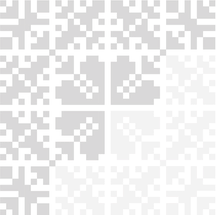C2 M2 L2 Grammar
2 | Modul 2:Gramatika
Slobodno vrijeme
2 | 2 | Lekcija 2: Glazba i film
| New Verbs
voljeti | željeti | vidjeti |
Ja volim sladoled. | Ja želim biti astronaut. | Ja vidim... |
raditi | ići | misliti |
Ja radim domaću zadaću. | Mi idemo u školu. | Ja mislim što raditi danas. |
trčati | planirati | |
Ja obično trčim svaki dan. | Ja planiram što raditi sutra. |
| Verb Stems and Verbs in -iti and -jeti
So far you have learned how to conjugate -ati verbs, such as gledati (ja gledam, ti gledaš, on/ona gleda, etc.). However, you have also encountered in our conversation verbs, like: ja radim, ja volim and ja mislim. You also encountered in our class today the sentence: Što voliš raditi u slobodno vrijeme? This sentence contains two new verbs (with two different infinitive forms): vol-jeti and rad-iti.
These two verbs represent two additional groups of verbs in Croatian: those that end in -iti (misliti: to think) and those that end in –jeti (voljeti: to like/to love). Both groups use the same set of endings. If you already know how to conjugate -ati verbs, you will not have much problem remembering how to conjugate these verbs. While -ati verbs use endings like -am, -aš, -a, verbs in -iti and –jeti will have the endings: -im, -iš, -i, etc.
Let us look at the verbs ending in -iti (raditi, “to do something”) first. Look at the following pattern.
RADITI (rad iti) | |||||
SINGULAR | PLURAL | ||||
ja | rad-im | mi | rad-imo | ||
ti | rad-iš | vi | rad-ite | ||
on/-a/-o | rad-i | oni/-e/-a | rad-e | ||
For these verbs (ending in -iti), use the stem of the verb and add the appropriate endings. For example, you encountered verbs raditi and misliti.
I work/do. (will be) Ja radim.
I think. (will be) Ja mislim.
Let us look now at the verbs ending in -jeti (voljeti, to love/like). Look at the following pattern.
VOLJETI (vol jeti) | |||||
SINGULAR | PLURAL | ||||
ja | vol-im | mi | vol-imo | ||
ti | vol-iš | vi | vol-ite | ||
on/-a/-o | vol-i | oni/-e/-a | vol-e | ||
G | 2.2 Zadatak 6. Voljeti i raditi |
Finish the sentences. Use the correct form of the verb raditi or voljeti.
| Modal Verbs
Modal verbs are used with other verbs to express ability, obligation, possibility, and so on. In this Module you have seen how verbs, like željeti, morati and trebati can be combined with verbs in their infinitive form to make sentences such as:
željeti | Ja želim posjetiti katedralu. | I want to visit the cathedral. |
trebati | Što trebam vidjeti? | What do I need to see? |
morati | Što moram posjetiti? | What must I visit? |
Just like in English, there is a set of verbs in Croatian that need to be combined with another verb in order to express the full meaning of the message we want to express.
The verb morati must always be combined with another verb in the infinitive.
MORATI | |||||
SINGULAR | PLURAL | ||||
ja | mor-am | mi | mor-amo | ||
ti | mor-aš | vi | mor-ate | ||
on/-a/-o | mor-a | oni/-e/-a | mor-aju | ||
However, the verb trebati can be used in a sentence alone (without another verb) followed by a noun (the object of the sentence) or with another verb. Look at the following three sentences and notice whether a noun or a verb follows:
1. Ja moram posjetiti katedralu. I must visit the cathedral.
2. Ja trebam ići u školu. I need to go to school.
3. Ja trebam knjigu. I need a book.*
* In the third sentence, “a book” being the object of the sentence, must be in the Accusative case
TREBATI | |||||
SINGULAR | PLURAL | ||||
ja | treb-am | mi | treb-amo | ||
ti | treb-aš | vi | treb-ate | ||
on/-a/-o | treb-a | oni/-e/-a | treb-aju | ||
| Interrogative pronoun koji, koja, koje…
While we cannot change the form of što (what), we can change the form of koji (koji) and have a corresponding form for each gender in the singular and plural forms.
The form of the interrogative pronoun koji in the Nominative will depend on the gender and number of the noun that the whole clause is describing.
For example: notice how you would translate 'koji' in English. You would probably say 'what is your favorite ...?' and not 'which'. Notice Croatian cannot use 'što' in these examples.
[masculine] | Koji je tvoj omiljeni glumac? |
[feminine] | Koja je tvoja omiljena glumica? |
[neuter] | Koje je tvoje omiljeno mjesto? |
The pronoun can also change its form and follow the pattern in any other case. So far we only encountered the nominative case and accusative case. Thus, the pronoun can also be in the accusative form:
For now, we will only look at the singular forms for masculine, feminine, and neuter grammatical gender:
[masculine] | Koji film gledaš? | What movie are you watching? |
[feminine] | Koju glazbu slušaš? | What type of music do you listen to? |
[neuter] | Koje mjesto voliš? | What place do you like? |
G | 2.2 Zadatak 7. Koji ili što? |
Complete the sentences by using either što or the appropriate form of koji.
Images used in this document are from these sources.


